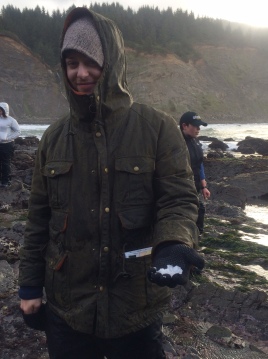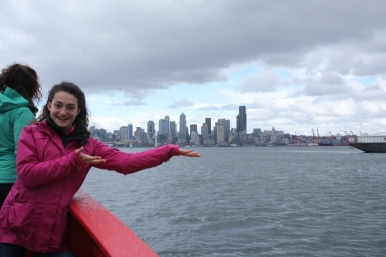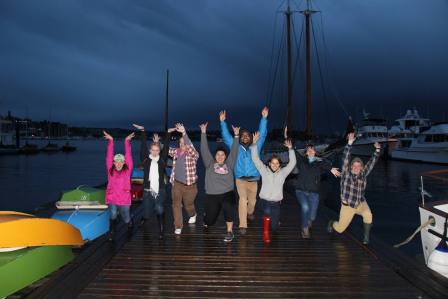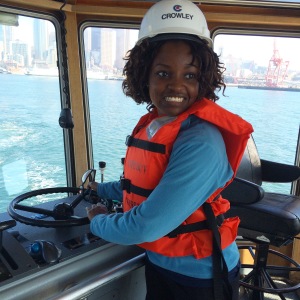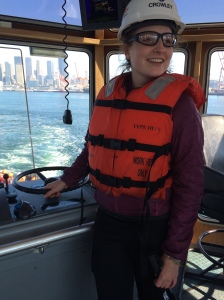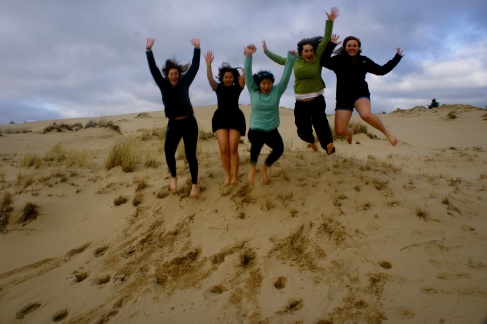This photo essay is by Fall 2019 student Johann Heupel. Johann is a Marine Science and Maritime Studies student at the University of Connecticut at Avery Point and a long-time aficionado of the history of our relationship to the sea. Having grown up in Mystic Connecticut, Johann’s future interests lie somewhere in educating a new generation about the wonders of the sea and our fascination with it, sharing maritime culture through art, science, song, and story.
This post is part of a series of photo essays depicting the Fall 2019 semester. For the complete series, click here.
We’re excited to announce that we will return to Alaska as part of the Fall 2020 semester! If you will be a sophomore, junior, or senior at a US college or university, apply now to join us. We meet 100% of financial need and welcome students of all majors.

(Above) View from the Glacier National Park guide boat across the mountains.
A group of students from all across the country, we barely had three days to get to know each other. Now, we were waking up at 3 am to travel to Alaska.
We spent the journey learning about each other, doing crosswords on the plane together or playing games in the airport, until we boarded three small six-seaters bound for Gustavus.
The planes would take us to Glacier Bay National Park: just a short ride across mountain tops and forested valleys away, yet that plane ride was the most incredible experience of the trip. Suddenly confronted with the sheer majesty of the Alaskan wilderness – a seemingly pristine environment with the breathtaking beauty of a David Attenborough documentary – we felt out of place with the modern world. As we landed on the airstrip, it was clear my feelings of otherworldly euphoria were shared by many. No one could quite describe the experience.
Everyone was exhausted and exhilarated that night, looking out across the fjords from our woodland cabins. Local salmon and halibut served to us and a night beneath the northern lights completed the feeling of a camping trip at the Ritz: an experience of an unfamiliar and captivating wilderness from the lap of luxury.

(Above) Image of the Johns Hopkins Glacier as it “calves”, splinters into icebergs.
By morning, we were boarding a Park Service vessel to explore the Bay, blown away by the sheer vastness of the landscape. In the distance, whales spouted like early morning mist whilst several hundred sea lions sunned themselves upon the rocks, and mountain goats looked down on us from the rocky ledges. As we approached the ice sheet, the low conversations of excited passengers heightened to a fervent chatter as we all beheld the ice – then lowered to a pensive silence as we listened to the glacier crack.
The realities of climate change for this beautiful landscape became inescapable. The icecaps around the glacier were melting rapidly as the streams of freshwater carved grooves in the mountainsides. As our professors looked out across the landscape, there was a mournful expression turned toward the ice sheet, as if they may never gaze again on this marvel of an un-polluted world. The crew scooped a piece of the glacier from over the side, and we were able to hold a piece of history that had survived for thousands of years in our hands.

(Above) Williams Mystic students marvel as Artie Claudio holds a piece of the glacier.
The rest of our time in Glacier Bay seemed too short. I wished I could have spent more time among the trees and on the water, kayaking the fjords of the bay or hiking mountain paths. The last night we had under the stars was spent among fast-made friends, remarking on the wonders of the natural world and our dream that it may be preserved, as we contemplated the ways in which young people like us could spark action and change.
I had never dreamed of seeing the majestic wilderness of Alaska before I came to Williams-Mystic, a transformative program based around travelling across the country while discussing important issues through multiple disciplines. This longstanding experiment of experiential learning allowed me to think about climate change in the very place the issue was most pressing, surrounded by experts to cultivate our experience and an incredible landscape worth protecting. I left with a sense of place that I had never gotten from a textbook or a classroom: an understanding and appreciation for the place where all these abstract ideas collide.










